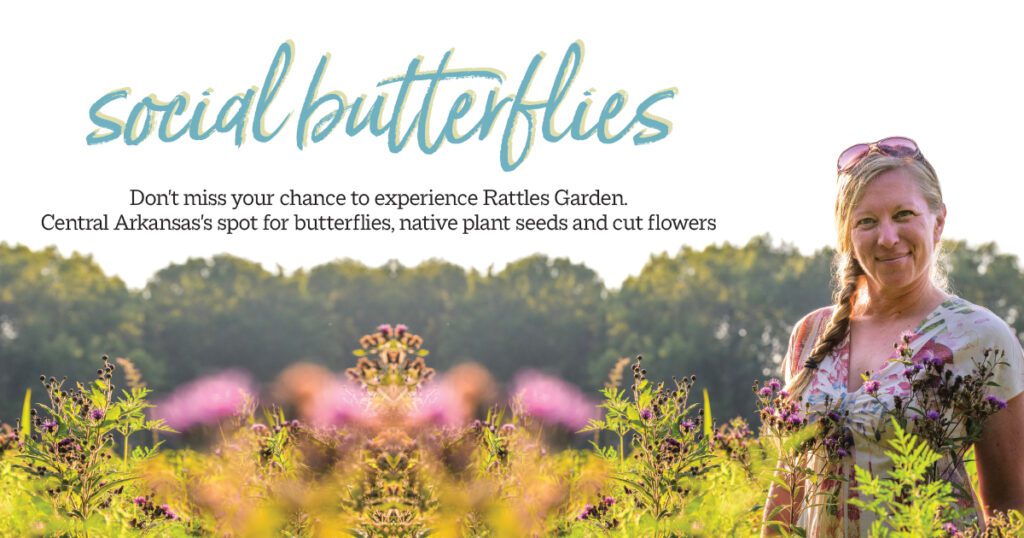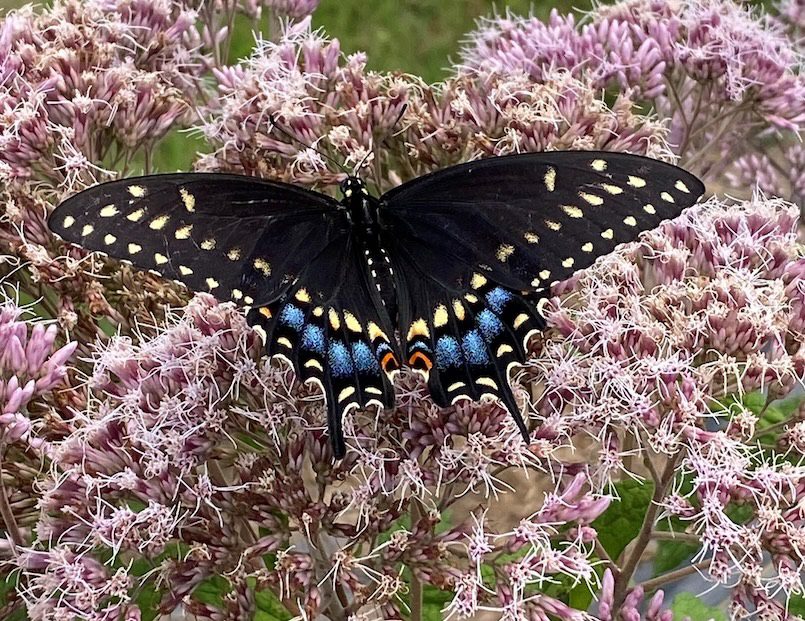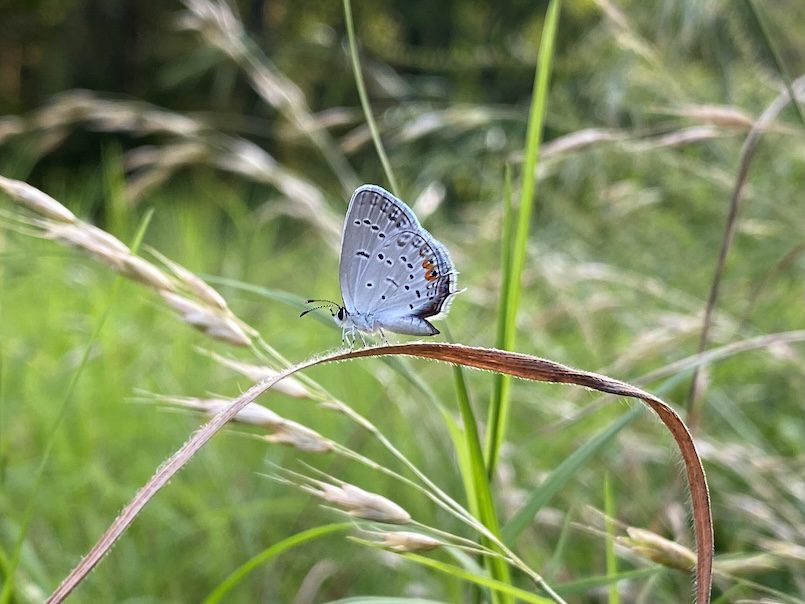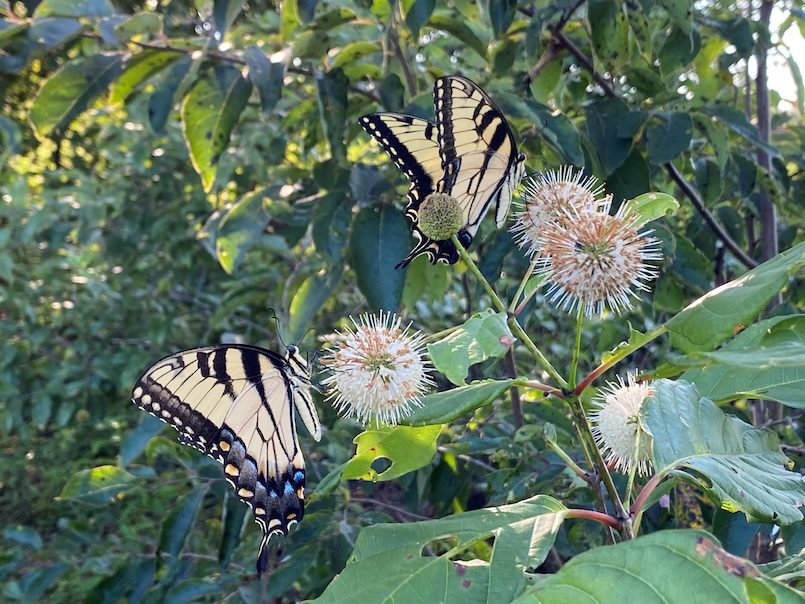08 Sep 2024 Social butterflies
By Judy Riley
All children love butterflies, but Tara Stainton of Vilonia has taken her childhood butterfly interest to an all-new level. For the last 15 years, she and her husband, Robert, have been certified organic vegetable and cut flower farmers on their 45-acre farm, Rattles Garden. She sells produce and flowers directly off the farm or through farmer’s markets. As the cut-flower business grew, so did the butterfly population. Soon, she began researching habitats necessary for butterflies to not only survive but thrive. She now sells plant materials that attract and support butterflies of all species.

There are 170 butterfly species common in Arkansas. One of these is the Diana fritillary (Speyeria diana), which became the official state butterfly in 2007, and its survival is considered threatened, “The geological diversity of Arkansas, including the Ozark and Ouachita Mountains, the Arkansas River Valley and the Mississippi River Lowlands are ideal habitat for butterflies. But only two of these areas have a significant population of the Diana: northwest Arkansas and Central Arkansas near the Arkansas River Valley,” according to butterflyidentification.com. Stainton lives in the heart of the Central Arkansas area and has documented more Diana sightings on her farm than those documented elsewhere in Arkansas.
This rare and beautiful butterfly distinguishes itself with its color patterns and the fact that males and females are markedly different. The male is black on the inner portions of its wings and bright orange on the outer margins of both fore wings and hind wings. Likewise, the female has blue, ranging from baby to navy to cobalt, on the outer margins of both fore and hind wings. The effect is a stunning wide band of color edging their wings. The Diana has evolved to prefer certain adult nectar plants, and one species, the native violet, for its larval host plant. The adult female lays eggs near violets on leaves, twigs and pine needles, basically on the ground. Without the violets and leaf litter, the caterpillar would not survive. Open grasslands next to forested areas often provide the best habitat. The Diana Project at dianaproject.org provides more information and links to other sites.

Call it an obsession, maybe, but Stainton definitely has a strong desire to encourage others to appreciate all butterflies, not just the Diana, and to do what they can to attract and support them. “It all started with sharing a few milkweed plants, a known food source for monarch caterpillars,” Stainton said. “That grew as folks asked me for milkweed. Last year, I grew several thousand native milkweed plants and distributed them across Central Arkansas.”
Stainton’s goals for her butterfly operation include producing high-quality native plant plugs (small rooted seedlings) available from their farm as food for caterpillars or nectar for butterflies. In time, she hopes to offer between 20–30 different proven species. A desire to create an experience for others prompted her to offer “pick your own bouquet” on Friday evenings.

“Or for folks slightly more adventurous, come walk our farm paths through the native plants in our butterfly fields and make your own observations,” she said. “Maybe even join us for a butterfly festival to celebrate pollinator week at the end of June!” Her end goal is to help others join them in creating a sustainable habitat for butterflies.
The Staintons recently purchased 75 acres adjacent to their farm, about half wooded, half prairie. Robert works as an environmental engineer for NativState, doing forest management. “Robert is obsessed with eliminating invasives on our farm and has become an active birder. I have been working on a plant list of (mostly) flowering species found around our farm, and a timeline of when certain butterflies are using specific plants as nectar sources.” according to Tara.
The process of an adult female butterfly laying eggs, those eggs becoming caterpillars in the larvae stage and a beautiful butterfly emerging from the cocoon is called metamorphosis. All butterflies go through this life cycle that is both unusual and inspiring. A caterpillar turning into a butterfly has been a curiosity and wonder in many children’s books, but what makes it happen is not a fairy tale.

The plants needed for caterpillar survival can be specific to the species. Common ones include the parsley and milkweed families, dill, fennel and Queen Anne’s lace. Common nectar sources are flowers from butterfly bush, butterfly weed, ironweed, rattlesnake master, coreopsis and native violets.
A butterfly garden can be as small as a few containers of plants or as large as a yard or farmstead. The basic requirements are sun, nectar source plants, larval host plants and a pesticide-free environment, according to University of Arkansas Division of Agriculture scientists at uaex.uada.edu.
The Stainton’s have gone through their own metamorphosis, from garden produce to cut flowers to butterfly habitat. The future is bright for supporting butterflies in the 501! Learn more on the farm’s Facebook page, Rattle’s Garden.








